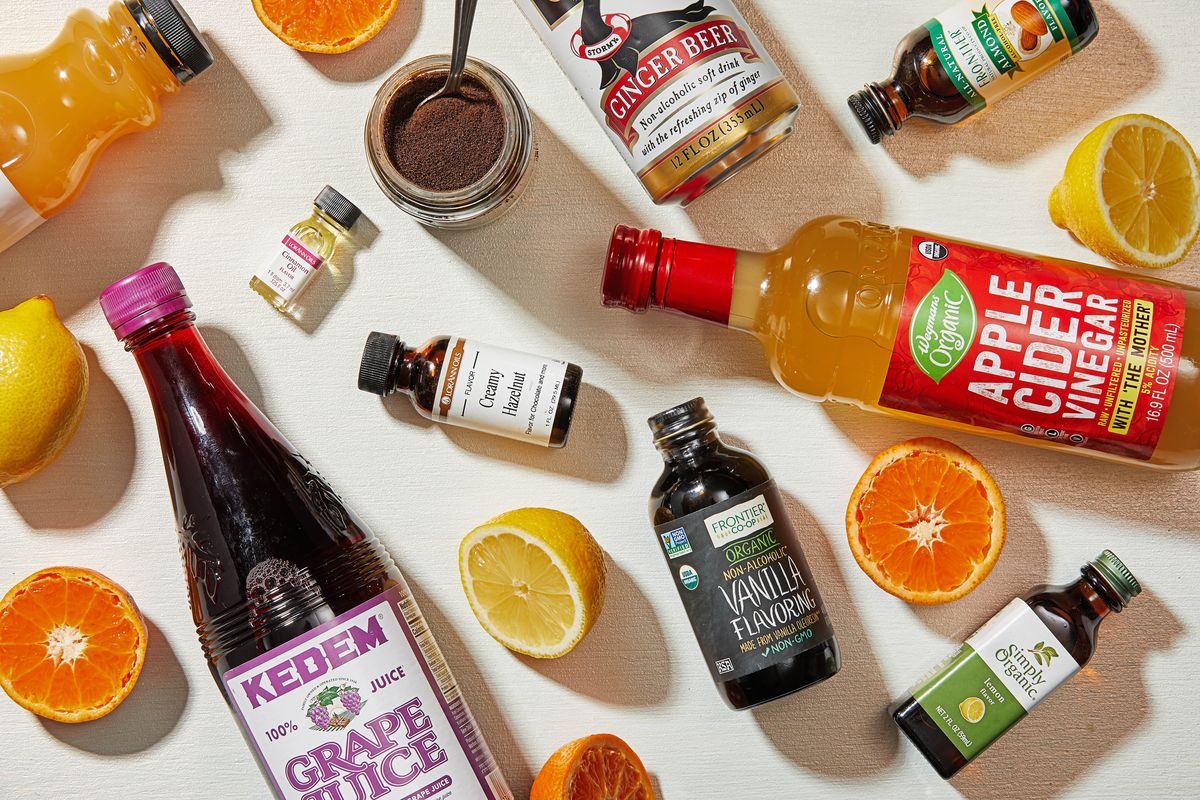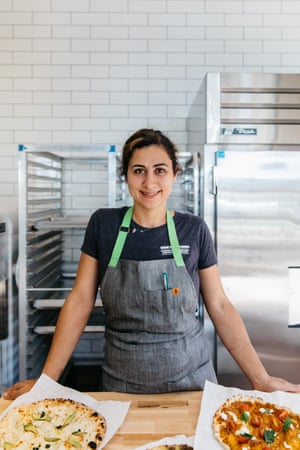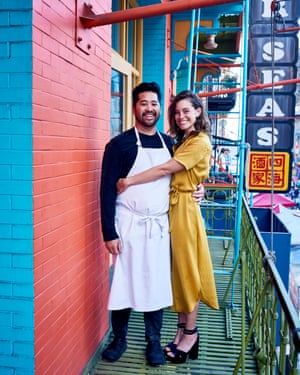This Chicken and Rice Is Perfect Home Cooking, With Prison Roots - The New York Times |
- This Chicken and Rice Is Perfect Home Cooking, With Prison Roots - The New York Times
- How to substitute for alcohol in cooking and baking - The Spokesman-Review
- Simple goals: Resolve to cook more good food - Canton Repository
- 'Cooking as therapy': California's top chefs on the recipes that got them through 2020 - The Guardian
|
This Chicken and Rice Is Perfect Home Cooking, With Prison Roots - The New York Times Posted: 06 Jan 2021 02:00 AM PST  For the past few years, there has been a cookbook on my shelf whose pages I keep returning to: "Cooking Outside the Box," a slim volume of recipes by people incarcerated in Michigan state prisons. Only recently did I realize it's because I'm searching for all the things it doesn't explain. Measurements, when they are used, involve sporkfuls, packages and bags. Instructions appear using an ID card to slice a pickle. The word "cook" always refers to using a microwave. Reading recipes for dishes like Lynda's Pizza Rolls and Cass's Noodle Cookie, I kept hoping for head notes and back stories. Who figured out how to turn crushed Doritos and hot water into masa for tamales? I've rarely been as impressed as I've been by these portraits of ingenuity, born of the utmost constraints. I couldn't interview those cooks, but I reached out to Earlonne Woods, the charismatic co-host and co-producer of the "Ear Hustle" podcast, because I wanted to get a sense of cooking for yourself in prison. Woods, who was first incarcerated at 17 and spent seven of his 27 years in prison at San Quentin, told me his favorite dish was chicken and rice, which he looked forward to making most weeks. "On Sundays, they would serve this roast-chicken hind quarter," he said. "But if you've got the kitchen hookup, you can get it raw." Woods, now 49, went on to describe preparing the chicken every week in his hot pot with salt, pepper and a bouillon cube. "Or if I didn't have one, I'd tear open some chicken Top Ramen and use the seasoning packet," he explained. "My mission was always to boil it for one hour until I knew it was really done." Then he'd use that flavorful broth to cook some instant brown rice. Finally, he'd garnish the dish with some cilantro — if he could get his hands on some. "I'd only cooked for myself once before," Woods said, "but the first time I made that chicken and rice, I felt like Chef Earlonne." Woods has been free for the past two years, ever since his sentence was commuted by Gov. Jerry Brown. I asked whether, after all those Sundays, chicken and rice still holds its charm for him. "Oh, yeah," he responded enthusiastically, going on to describe a 10-pound bag of chicken he bought and froze after moving into his apartment. "I thawed the whole thing so I could cook one leg and was going to put the rest back in the freezer, but when my friend heard me mention it, she told me, 'Uh-uh, boo boo, you can't freeze that no more.'" With no other choice, he turned on his oven and every burner on his stove, filled every pan and baking dish he had with chicken and got it all cooked so that it wouldn't spoil. "That was a lot of chicken," he said. After our conversation, I asked Woods if he'd like a cooking lesson in the form of an updated recipe. He accepted, and I set out to create a simple, flavorful one-pan version of the dish. My goal was to tuck several bits of kitchen wisdom into a single recipe for Woods, who had told me that he never really learned to cook. First, by browning the chicken and then cooking it over a bed of aromatics with liquid, he'd learn to braise — something he could do with practically any other cut of dark meat or dense vegetable. Second, I wanted to amplify Woods's own excellent instinct to enrich the liquid for his chicken with seasonings and then use that broth to cook the rice. Inspired by Woods's seasoning packets, I made a mixture I called "Earlonne spice," using smoked paprika, coriander and cayenne, along with dried garlic and onion. Together with a simple base of onions, celery and bay, the mix fortified the homemade chicken broth, ensuring the rice would be savory and satisfying. Each time I made it, the dish filled my cold kitchen with the sort of home-warming aromas I wanted Woods to enjoy. Prison dehumanizes the incarcerated in part by denying them so many of the sensory experiences of life, including the small, essential delights we take for granted when we cook — the scent of onions cooking in butter or chicken broth simmering away on the stove. I hoped cooking the chicken might return some of this to Woods. As Woods tried his hand at the dish, he sent me updates and questions, sometimes working out an answer for himself over the course of a voice mail message. I could tell he took cooking seriously, but I'm not convinced the recipe had quite as romantic an effect on him. Though in the most important ways, it was a success: He was learning, but still letting his instincts guide him, improvising his way to dinner with pans that weren't quite big enough and an oven that wasn't quite hot enough. And then he sent me a video that I think made him as proud as it made me: a friend's clearing his plate and exclaiming, "You put your foot in it!" Earlonne told me he'd be using this chicken recipe from now on. |
|
How to substitute for alcohol in cooking and baking - The Spokesman-Review Posted: 05 Jan 2021 02:04 PM PST  There are a number of reasons alcohol is off-limits for some people when cooking or baking, such as an allergy or an inability to use it when preparing food for children or those who might be in recovery. Maybe it's not in your pantry, now that we're shopping less often, or even your budget. Regardless of the rationale, know that your recipe will likely taste fine without the alcohol. Just don't count on it cooking off in instances where you can't serve it to someone. According to a chart of nutrient retention from the USDA, baked or simmered goods can retain as much as 40% of the alcohol after 15 minutes, with the amounts decreasing as time goes on, down to 5% after 2½ hours. Even setting alcohol on fire gets rid of a mere 25% of it. When deciding whether to omit or find an alternative to alcohol, the first thing to ask yourself is what purpose is it serving, says David Joachim, who wrote "The Food Substitutions Bible." That purpose will likely fall into one of two categories: flavor or function. The good news is that in almost all recipes that call for alcohol, the purpose is to add flavor. "Generally, it's not the alcohol" itself that's important, Joachim says. One of the major exceptions would be if you planned to, say, set fire to your bananas Foster. Otherwise, take solace that "all alcoholic beverages are primarily water," Joachim says, meaning you can just focus on how to duplicate the flavor and acidity it delivers. Joachim notes that alcohol can "improve the flavor perception" by bonding with other ingredients, such as in a marinade with oil where it can attach to both the water and fat molecules. Still, in savory cooking, the alcoholic beverage or extract is primarily a medium for carrying flavor, and that can often be accomplished by using nonalcoholic ingredients, too. Here's how. Wine. Don't overthink things: "This is a liquid made from fermented grapes," Joachim says, adding that acidity is one of the main features of wine, which has a pH of 3 to 4. Tomato juice has a similar pH. So does coffee, which is an especially good stand-in for a pinot. If subbing in one of those ingredients for red wine, add a small amount of honey or sugar to bring in the restrained sweetness you might have gotten with wine. In a sauce, soup or braise, beef broth can replace red wine. Joachim recommends adding a little vinegar and sugar here, as well. Consider chicken broth as a lighter sub for white wine, again with some vinegar and sugar added. For smaller amounts, such as when deglazing a pan, a splash of vinegar – red wine, if that's acceptable, or cider – is a possibility. Grape juice comes to mind as the alcohol-free alternative to wine, but even unsweetened varieties skew sweet. If you want to try that approach, cut it with water, adding tartness via vinegar or citrus juice. Now is also the time to consider the ever-expanding world of nonalcoholic wines. (The Washington Post's wine columnist, Dave McIntyre, called Welch's Sparkling Rosé Grape Juice Cocktail "tasty and refreshing.") Beer. Nonalcoholic beer is a simple swap. It's not the only option, however. In a stew or soup, feel free to replace the beer with chicken stock. If a very small amount of alcohol is acceptable, a few dashes of Angostura bitters can work back in the slight bitterness you'd otherwise get in the beer, Joachim says. If that's not doable, go ahead and throw some orange rind in your soup or braise. Here is where you want to include the white pith, according to Joachim, because that's where the bitter flavor resides. In situations where the carbonation of the beer is serving a functional purpose, such as in a beer-battered recipe, you can use sparkling water instead. In the right context, a sweetened soda or ginger beer might work, though you may want to balance it out with something bitter like orange rind. Hard cider. This popular beverage great for sipping and cooking offers apple flavor and carbonation. If you can find a dry, nonalcoholic cider, use that. Some bottled brands lean sweet, though some hard cider makers also are bottling their own alcohol-free versions. Unsweetened apple cider is another option. Cider vinegar will help bring in the more savory edge you'd get from hard cider, but if you use it, Joachim suggests mixing it with cider or unsweetened juice because it will be too tart for a one-to-one swap. Extracts. Traditional extracts are typically alcohol-based. Several companies, including Heilala and Frontier, offer alcohol-free vanilla extracts and flavorings. Frontier's line also includes other flavors, such as almond, lemon and peppermint. Another option: flavor or candy oils. These are super-concentrated, so a little goes a long way. Whereas you might be used to thinking about extracts in terms of teaspoons, oils need to be used by the drop. Joachim also encourages cooks to think about getting as close to the original source ingredient as possible. No vanilla extract? A vanilla bean can do the trick, too, if it's in your financial means (you can get double the use of it by burying your spent pod in sugar to be used in a subsequent bake). Lemon and orange extracts are easily replaced with citrus zest, packed with the aromatic essential oils. Rub the zest into the sugar in your recipe first to bring out its potential. Ditto mint leaves. Crushed peppermint candies can flavor the liquid in a recipe. Vanilla beans or almonds can be steeped in heated milk or cream for another flavor infusion option. Be OK with thinking outside the box. Consider what different flavors might get you to a similar place. Cardamom, for example, can be a decent – or even more interesting – stand-in for vanilla extract. They share a warm and enticing floral aroma. Liquor and liqueurs. Flavored liqueurs often make their way into baked goods. Here's another spot where you can replicate the original flavor. Coffee-flavored liqueurs can be replaced with espresso powder dissolved in water or plain brewed coffee; ditto chocolate liqueur and cocoa powder. No orange liqueur? Orange juice to the rescue. Joachim says bourbon flavors are primarily caramel and vanilla, so you can caramelize sugar and mix it with water. Or pivot to a nonalcoholic vanilla extract or flavor, which also works for almond flavors when a recipe calls for amaretto. Keep in mind that extracts and flavor oils will be more concentrated, so you'll want to cut back the amount when swapping for liqueur. Some pie crust recipes call for vodka. The premise is that the vodka will provide moisture to make the dough easier to work with without adding as much water, which contributes to the formation of gluten – and potentially toughness – when combined with the proteins in the flour. If vodka is a no-go, simply substitute more ice water, taking care not to overwork the dough. (Or go with a recipe that only uses water.) Alcohol-free spirits also are on the rise, with brands such as Seedlip offering alternatives to standbys such as gin. |
|
Simple goals: Resolve to cook more good food - Canton Repository Posted: 06 Jan 2021 03:02 AM PST  Speaking of home cooking, I was strolling through a cemetery the other day, the historic Graceland on Chicago's North Side. You should see the monuments. This one dead guy, Potter Palmer — you've heard of The Palmer House Hotel? That's him — he's got an actual 16-columned Greek-style temple with matching sarcophagi for himself and his wife. Here's my question: Obviously, Potter spent 37 tons of cash on his upscale tombstone, but, does that mean he also gets to be more dead than the rest of us? Like, he's up there in First Class Dead having free Champagne poured over his carcass by the horned and gnashing flight attendant while the rest of us suckers are back in Coach Dead not being able to decide between the chicken cordon bleu and the beef tips. Because we're dead. Regardless of our seat location, though, if we're flying the Airways Styx, we're all landing on the same runway. And there, since we're still in "pre-boarding" mode — from my lips to God's ears — we should spend some time, right now, making ourselves — and, consequently, the world — a better place. "But, how?" you squeak plaintively. "How?" How, indeed. WHY YOU NEED TO LEARN THIS Aren't you tired of being you? Jeepers, if I had a nickel for every dejected sigh of resignation I heard in 2020 alone, why, I could spend eternity in comfort next Palmer. Let's make 2021 be the anti-2020, then, until it's so crammed with awesome personal betterment that it explodes like a foie gras goose. And this being Prep School, let's start with working on your cooking game. THE STEPS YOU TAKE When I was a kid, my mother used to tell me — a lot, actually, and usually at dinner, when I'd frown at some grim gastroterror like canned, cubed beets in heavy syrup — "You know what your problem is? I'll tell you what your problem is. Your problem is, you don't know what's good. That's your problem." Happily, after a lifetime of experience and no small amount of therapy, I believe I have learned what's good. Compassion, for one. And nonslip shoes. But, also an acknowledgment that self-improvement has no limit, and the quest for said is, of itself, good. Let us think, then, on ways to improve ourselves and, by extension, the world, as we at long, long last leave that 2020, that flat and fetid roadkill of a year, receding in the rearview. Some resolutions, then? Resolution No. 1: Order some carryout. I don't know if you've seen the papers, but, there's a pandemic. Among its many victims is the restaurant industry. So, here's one good thing you can do: Find a restaurant you love, then pick up the phone (call them directly — those delivery apps cost them money) and fork over some cash. Once a month would be great, every week if you're loaded. Those line cooks and hosts, those servers, dishwashers and bussers, lots of them barely scrape by, even in the best of times. Order some carryout. Seriously. Oh, and tip big. Always. Resolution No. 2: Repeat after me: "I, (state your name), hereby resolve that, with God as my witness, this year I'll cook more good food." Here's what's cool about that resolution: You can emphasize the "cook more" part or the "good food" part. If you don't already cook a lot, start. If you do already cook a lot, now you can improve your technical skills or expand your repertoire. Learn to move faster or just make your food taste and look like something you'd want to put in your piehole. Here are three sub-resolutions, for your convenience: Resolution No. 2A: If you're the "can't make toast" type, resolve to cook at least one meal every week. It doesn't have to be "gourmet" or even "from scratch." Start small. Make some toast or, better, boxed pasta. (Add pasta to a big pot of salted, boiling water and cook, stirring occasionally so the pasta doesn't stick, for the time listed on the package.) Then, learn how to heat jarred pasta sauce (Pour sauce into a "saucepan" — those are the tall ones rather than the short, wide ones that are called "saute pans" — and place over medium high heat, stirring occasionally to keep it from scorching.) From there, learn how to make baked potatoes and blanched green beans and converted rice (not instant rice; you may as well eat damp cicada husks). Remember, a journey of a thousand miles starts with something I can't remember. But, miles, shmiles, you should learn how to cook. Resolution No. 2B: If you already do your share of cooking, try expanding your culinary horizons. What's a cuisine you love to eat but have never tried making? Indian? Italian? Israeli? (Do all cuisines start with the letter "I"? Indonesian, Iraqi — I guess they do. Icelandic, Iranian, Irish. Whooooaaaaa!) Do some research. Find a good book or website on that cuisine. Go to the neighborhood inhabited by people who make that cuisine. Get some carryout while you're there (See Resolution No. 1). Then, find a grocery store for the spices and dry goods you'll need to make that cuisine. Start reading and following recipes. Pay attention and respect to the people who grew up making this food, but, don't obsess over "authenticity." Even with grandma's recipe, your beshbarmak won't fool anyone in Zhezqazghan. Resolution No. 2C: If you're a seasoned cook, fess up to your weaknesses. How fast can you dice an onion? Are your knives even sharp? Or, what have you always wanted to learn? How about tossing vegetables in a hot pan like a beast? Put a handful of kosher salt in a cold, dry saute pan — that short, wide one with the slanted sides. With the pan resting on your un-turned-on burner, move it back and forth to make the salt move en masse, like thundering herds of goitered gazelles o'er the semiarid Kazakh Steppes. Next, try moving it forward and stopping it suddenly, so the salt rides a bit up the far side of the pan. Do it again, but this time, when the salt rides up, pull the pan back quickly with a very slight upward wrist flick to make the salt arc lightly backward through the air and back down onto the pan's surface. Keep practicing until it's consistent, rhythmic. Next, try it when you're sauteing onions or the delicious mushrooms in the recipe here. Bonus Resolution: Practice. Er meh gerd, name one thing you got perfect the first time you tried it. The trombone? Brain surgery? Cooking's the same way. The more you practice your kitchen skills, the more you make a specific dish or cook from a particular cuisine, the better you'll get and the sooner it will seem like second nature. To conclude, my friends, this year, think about how you eat. Support your locally owned restaurants. Make yourself some good food. The world will be a better place. Or, at the very least, because you're eating something delicious that you made with your own hands that sit on the ends of your arms, the world will appear, if only briefly, to be better than the living hell it is. OPTIONALLY BRANDIED MUSHROOMS Makes 2 cups Ingredients: 2 tablespoons butter or oil 1 to 2 cloves garlic, minced 1 pound mushrooms, sliced or quartered Salt and pepper as needed 2 tablespoons brandy, optional Steps: 1. Place butter in a large, heavy-bottomed skillet set over highest heat. After butter melts, it will begin to foam. 2. As foam begins to subside, add mushrooms to cover whole pan. Season with salt and pepper and allow mushrooms to sit, undisturbed, until brown on the bottom, 1 to 2 minutes. 3. Push several mushrooms to the side of the pan to make room, then add garlic into fat and let cook until fragrant, 20 to 30 seconds. 4. Toss or stir mushrooms until cooked through, about 1 minute. 5. Remove pan from heat and add brandy. Return pan to heat and tilt to flame brandy. When flames subside, toss or stir mushrooms to coat evenly, then taste for seasoning and serve immediately. HINTS Feel free to leave out the booze. The mushrooms are delicious on their own. NUTRITION, PER SERVING 39 calories, 3 g fat, 2 g saturated fat, 8 mg cholesterol, 3 g carbohydrates, 1 g sugar, 1 g protein, 4 mg sodium, 0 g fiber VARIATION Mushroom sauce. After mushrooms are done, reduce heat to medium and stir in 2 tablespoons flour. Cook, stirring, until flour combines with fat in pan to form a roux, 2 to 3 minutes. Increase heat to high and stir in 1 pint chicken, beef or vegetable broth, making sure to dissolve all roux completely. Heat to a boil, then reduce heat and simmer 10 to 15 minutes to reduce starchy flavor. Remove from heat, add 2 to 3 tablespoons whole butter and stir constantly until butter is incorporated into sauce. Taste for seasoning and serve immediately. |
|
Posted: 28 Dec 2020 12:00 AM PST California's Bay Area is home to some of the country's best restaurants, and many global food trends – from the sourdough craze to the farm-to-table movement – can trace their roots back here. But with the pandemic upending the restaurant world, Bay Area chefs have been doing what we're all doing: cooking and eating more at home, and turning to food as a source of comfort, nostalgia and creative relief. We caught up with our favorite chefs, some of whom have been driving the Bay Area's scene for decades, and others who are shaping its future: Alice Waters, the doyenne of seasonal eating and founder of Chez Panisse; Gilbert Pilgram, the exuberant head chef of the longtime San Francisco favorite Zuni Cafe; Sarah Kirnon, the founder of Oakland's beloved Caribbean restaurant Miss Ollie's; Brandon Jew, the founder of the boundary-pushing Chinatown eatery Mister Jiu's; and Reem Assil, whose California-inspired take on the traditional Arab bakery has won Reem's national accolades. We asked them to discuss the role that food is playing in their lives right now, and the dishes they're turning to most often. And each have shared a recipe that readers can make in their kitchens at home. Interviews have been condensed for length and clarity. "Making jerk chicken triggered emotions I hadn't addressed" Sarah Kirnon, Miss Ollie's For me, this time has really been all about more outdoor cooking – lots and lots of grilling. Which is something I do anyway, but now it's been more intentional, because I still love having people around. In my circle of friends and family, I've always been the person that cooks for birthdays and special occasions, usually at my house in Oakland, and that feels like a safe way for us all to be together. My partner and daughter are vegan, so we do veggie and meat grills. And a friend of mine recently gave me this really beautiful smoker/grill; she actually bought it with an ex-boyfriend and was convinced it had bad juju, so I inherited it. On Labor Day, I marinated some jerk chicken and smoked it for four hours. We made the grill the centerpiece of the garden, we had music, it was just a really beautiful day. The smoke, the smell of the allspice wood, it reminded me of home. Which was a bit sentimental, because this is the first year that I haven't been back to Barbados to see my family. I wasn't sad, but it was emotional. I thought I was dealing with Covid really well, but not being able to see my extended family – who all live in London, Barbados and other islands of the Caribbean – triggered in me emotions I don't think I had addressed. I was born in the late 60s, when dining out meant you supported a small, neighborhood joint, where you went for birthdays and family occasions. That's changed a lot over the years. So, at the restaurant, it has been beautiful to see people slow down a bit, people being happy to wait, happy to engage with somebody outside their home. I hope that's one of the things we hold onto when things go back to normalcy. "My daughter and I love playing 'restaurant' at home"
|
| You are subscribed to email updates from "cooking" - Google News. To stop receiving these emails, you may unsubscribe now. |
Email delivery powered by Google |
| Google, 1600 Amphitheatre Parkway, Mountain View, CA 94043, United States | |
from What to Cook https://ift.tt/2XeQ2if




